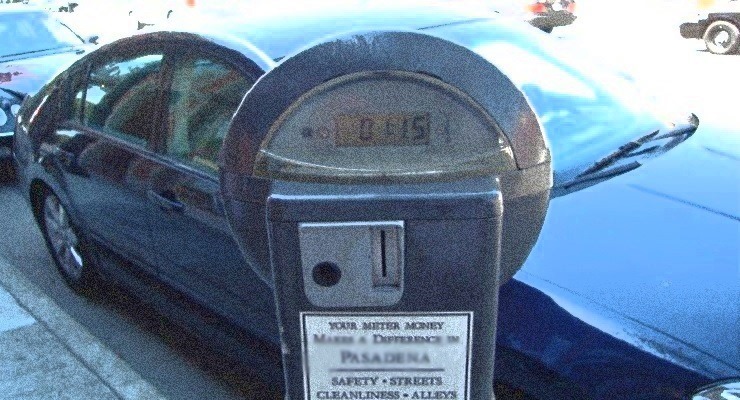Moved to tears in giving her testimony during public comment, Crystal Beard recounted the horrors of her Pasadena housing experience.
After faithfully paying rent for two years despite the housing being under construction, subject to privacy violations and pests, this 25 year-old Pasadena City College student with three jobs was served a 60-day notice to vacate.
Beard discovered after she left that the landlord had immediately rented out the apartments at much higher prices to a gentleman with a Porsche and another with a motorcycle. After 25 years of living in Pasadena, Beard was thrust onto the verge of homelessness.
“I didn’t understand. I was a good tenant, quiet and respectful. And though it wasn’t always easy, I paid every payment — every penny faithfully, every month. I tried many places, but I couldn’t afford them. I tried Union Station as a last resort in a panic, facing homelessness… Good low-income tenants need protection. And there should be a [good] reason before one’s livelihood and educational endeavors are so callously disrupted,†Beard said.
In Pasadena 19,878 households, or about 46 percent of the city’s households, are in the very low and low-income categories, requiring affordable housing. Yet, real obstacles face the city of Pasadena in providing enough affordable housing to fill the need according to Mark Hoffman, a principal of the city planning firm The Planning Center|DC&E, who addressed the City Council on Monday.
City Council unanimously approved the recommendation to submit the updated draft of the 2014-2-21 Housing Element to the California Housing and Community Development Department (HCD). The draft will be subject to a 60-day review process by the state and returned with comments for the council to finalize the Housing Element plan.
Around 50 community members picketed during the meeting, holding signs that read, “Housing For All.†Speakers called for affordable housing and an oversight committee or task force which could work closely to oversee and implement all housing issues.
In Hoffman’s presentation, he revealed that Pasadena’s affordable housing funds plummeted 85 percent since 2006. Slightly more than $1 million is now available compared with the $8 million in 2006.
“We do hope with the recovering economy, inclusion-housing fees will be coming back, but still that’s a significant hit to the bottom line,†Hoffman said.
Despite tough economic times, Hoffman said the city of Pasadena has had considerably rare accomplishments and continues to build at a steady rate, especially in comparison to surrounding cities.
In the past six years, 500 new affordable units have been produced and there are additional 1400 households receiving subsidies. Projects like the 188 unit Stuart apartments, the Mixed Use projects, the Cypress Avenue Project, Centennial place project, 45 unit Hudson Oaks Senior home and 37 units in Orange Grove Gardens for low-income large families helped add to the success.
The purpose of the City’s Housing Element plan is to meet specific requirements by the state. The Housing Element outlines how to provide housing for people with special needs, what the housing needs are, and how the city plans to address the needs. The requirement is to provide a new Housing Element every eight years, however, the City of Pasadena voted to analyze the element ever four years and give a yearly update.
Many from the Greater Pasadena Affordable Housing Group had signed a letter to the Council sent before the meeting and attended to re-emphasize their points. City staff suggested most of the revisions provided in their letter be taken up with the proposed draft laid before the Council and are now incorporated.
“What would be helpful is possibly a committee of concerned citizens, a blue ribbon committee, built around very low, low and moderate income housing. The trust funds essentially have no resources in them to help developers build affordable housing, so what we get is a hodgepodge approach to a very serious problem… We have seen an increasing decline of African Americans and surprisingly a negative impact as well on Latinos,†Councilmember John Kennedy said before the same requests came from the community members.
Several other members of the Council agreed some kind of ad hoc group or blue ribbon committee, whether temporary or permanent be set in place so that they can “run the issues to the ground and solve them,†as Councilmember Terry Tornek said.
The housing element for 2014-2022 will not be completed until the draft returns from Sacramento after 60 days and the Council is able to study the matters further, at which time the staff will recommend what kind of housing group should be established.
The draft incorporates the nearly 3,000 comments the city received during the public forums about housing in Pasadena. Many of the comments asked for the city to preserve the current affordable housing, which became reflected in the Housing element.
“Please don’t let disabled, seniors, and homeless in Pasadena end up back in the streets,†community member Michael Watkins said.
However, Melody Harvey representing the Flintridge Center asked that the special needs group with rental assistance be extended to one other people group. Harvey suggested the Council include formerly incarcerated individuals under a special needs group as disadvantaged residents.
“In Los Angeles 30-50 percent of paroles end up homeless. Those who find stable housing relatively soon after release are much less likely to be re-arrested,†Harvey said.
All kinds of extremes were explored to making housing more affordable, including a suggestion for new housing without any parking. A resident of northwest Pasadena also asked that the Council consider with more fervor a study of the question of second units, something the city has said they would look into with no real deadline. The city has a plan to look into second units by 2016.
Second units are self-contained units attached to or detached from the primary residential unit on a single lot. Second units typically rent for less than apartments of comparable size, and can offer affordable rental options for seniors, college students, single persons, and extended families. Rent from second units can help modest income and elderly homeowners remain in or continue affording their homes.
The Housing Element document said, “Though Pasadena has had few applications for second units in recent years, in consideration of continued input from the public, the City will reevaluate its current ordinance requirements.â€
Denver Miller, the city staff in charge of the Housing Element, made a point that the current housing situation presents several challenges with foreclosures and price escalation happening at the same time, as well as many legislation changes. Miller said he has done his best to meet community goals and desires by addressing all the stakeholders in the city and hopes to resolve more housing issues with this new Housing Element.














 0 comments
0 comments


